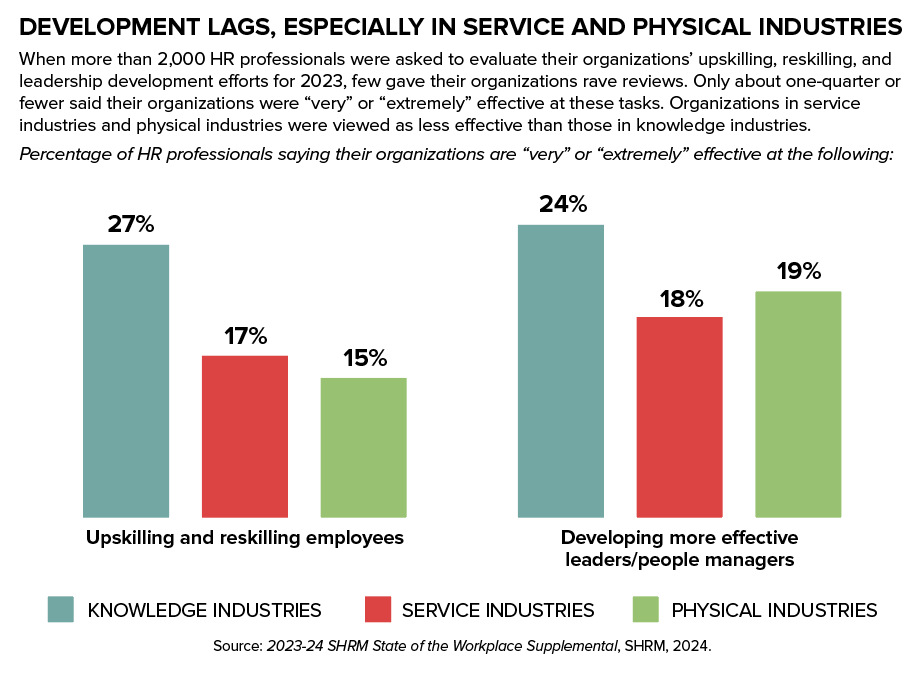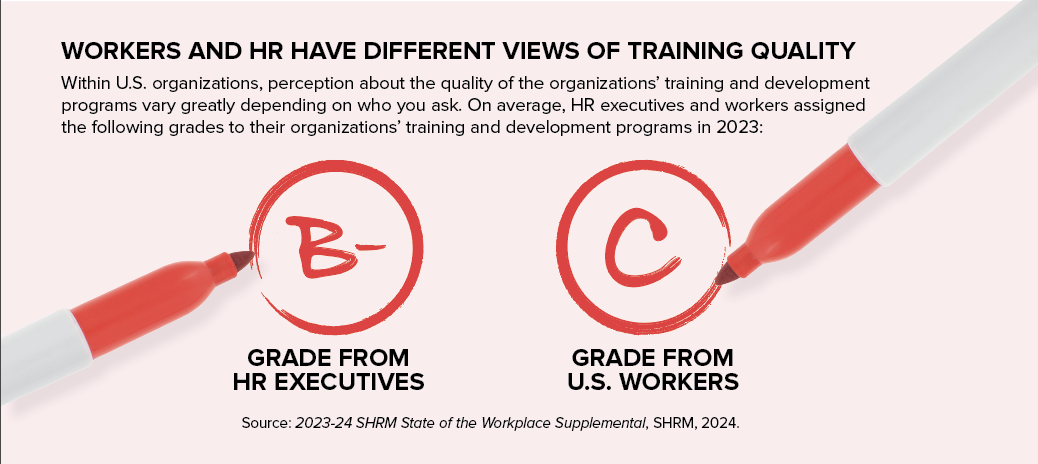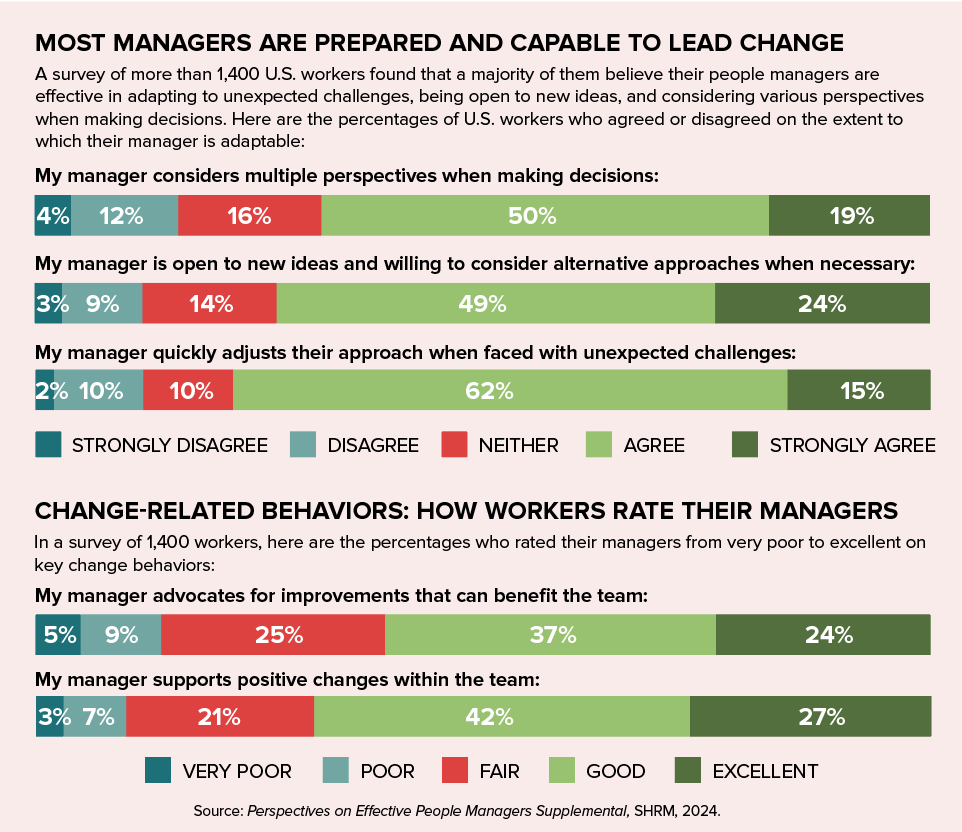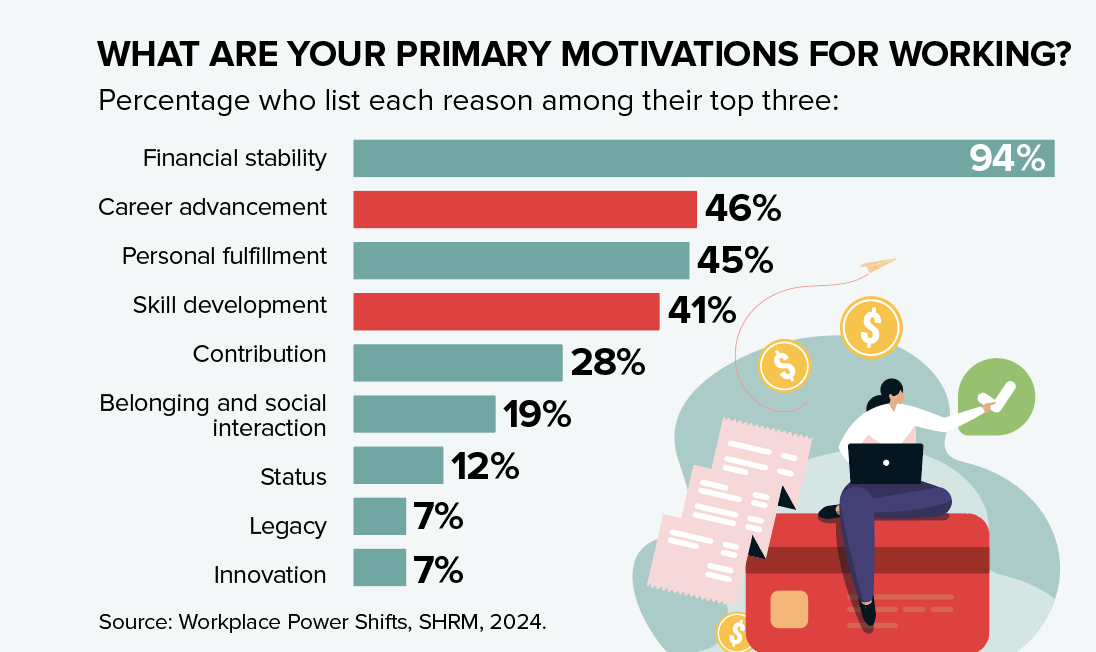As the workforce ages (and diversifies), artificial intelligence advances, employee expectations evolve, and labor market trends fluctuate, organizations face the complex challenge of how to adapt to all this change. To thrive, organizations must fundamentally rethink traditional HR strategies to align with these new realities and drive organizational success.
New SHRM research pinpoints exactly where HR executives believe these transformations are needed—employee development. A sharp focus on development is essential to address skills gaps, leadership shortages, and employees’ desire for growth and advancement, as well as organizational competitiveness. Fortunately, as SHRM research shows, HR executives have a proven track record of managing change effectively, and people managers are prepared to lead this transformation from the front lines.
Here are the results from multiple SHRM research studies that surveyed HR executives, HR professionals, and U.S. workers.





* * * * * * * * * * *
MESSAGE FROM THE SHRM RESEARCHERS
The Future of Employee Development: Embracing Change and Technology
by Ragan Decker, Ph.D.
HR executives recognize there is a need to modernize their employee development strategies. Traditionally, these strategies have been reactive, addressing immediate skills gaps or compliance needs. However, this approach is falling short in today’s fast-changing business environment.
The pace of technological advancements, exemplified by recent advancements in generative AI and automation, has created a skills gap that demands a proactive and strategic response. According to SHRM’s 2024 Workplace Power Shifts study, more than 3 in 5 U.S. workers (61%) agree or strongly agree that technological advancements have led to greater demand for specialized skills and expertise in their industry.
Technology is not only transforming the nature of work but also revolutionizing how we learn and develop. According to SHRM’s 2024 AI in HR Report, 43% of organizations are leveraging AI to support learning and development, making it one of the top three use cases for AI adoption in HR. Among organizations using AI for learning and development, 49% utilize AI to recommend or create personalized learning opportunities for employees, while 45% use it to monitor and track development progress.
However, AI’s potential extends beyond these applications. For instance, some HR professionals report using AI for scenario-based learning, simulating real-life customer interactions or to better prepare employees.
Economic pressures are further driving the need for a revamped approach to employee development. In a competitive labor market, it’s no longer enough to offer attractive compensation. Employees today expect their employers to invest in their growth and career progression. In fact, career advancement and skill development are two of the top four primary motivations that employees give for working (see box below).
3 Ways to Enhance Learning and Development
To attract and retain top talent, organizations must create an environment that supports employee development, such that workers feel empowered to acquire new skills and advance their careers. To navigate this evolving landscape effectively, organizations should consider the following actions:
1. Build a strategic partnership between HR and the business. Develop a close collaboration between HR and other business units to ensure that employee development strategies align with organizational goals. By collaborating closely, HR can identify critical skills needed for future success and integrate development initiatives into broader business strategies. Empowering people managers to participate in the development process creates shared ownership and ensures that development efforts are aligned with business needs.
2. Foster a culture of continuous learning. Cultivating a learning mindset throughout the organization is essential for long-term success. Create an environment where ongoing education and skill development are prioritized by incorporating learning goals into the performance management process. Encourage employees to pursue new learning opportunities, provide resources for self-improvement, and integrate learning into daily workflows to keep pace with industry changes.
3. Embrace technology as an enabler. Leverage advancements such as AI, automation, and advanced analytics to enhance development initiatives. Instead of relying solely on conventional training methods, experiment with immersive simulations, gamified experiences, and other cutting-edge formats to create engaging and learning experiences.
By personalizing learning paths, predicting skills gaps, and optimizing training content, organizations can create a more targeted and effective learning experience. Investing in robust learning management systems that integrate with performance management tools is crucial. Measure and demonstrate the ROI of tech initiatives to secure ongoing support.
Ragan Decker, Ph.D., is the manager of EN/ES Research at SHRM.




